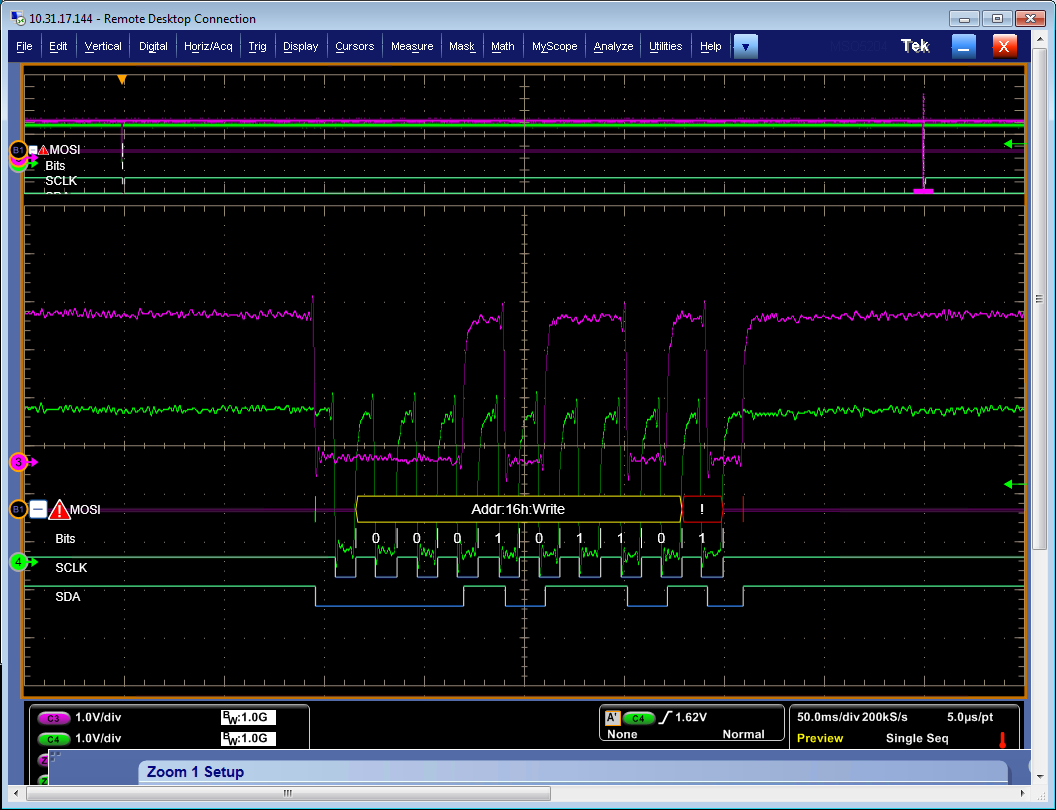Your document slua645-1.pdf states this about programming the BQ33100 flash - "Caution: If power is interrupted during this process, the device may become unusable". I can confirm that this caution appears to be true; I executed a power interruption during programming before seeing the cautionary statement. The BQ33100 now no longer acks it's default address of 0x16 and no pulse activity shows up on the TS pin (thermistor). To me, the BQ33100 appears to be 'bricked'. I have some extra questions about this.
1. There are probably extra circumstances under which this bricking occurs. On another drive, I saw the host fw start a learn cycle in the middle of the programming cycle. That chip too appears bricked. This makes me worried about how to treat the chip; I'd like to figure out all the circumstances I must avoid.
2. Can you throw light on why the chip becomes bricked? It must be some state variable within the chip, since I seem to have bricked a chip without a power cycle.
3. Is there no recovery possible for a bricked chip? Do I need to replace chips that are bricked? If so, what is a definitive measure that indicates bricking has taken place? Is NACKing address 0x16 sufficient? Is lack of pulses on the TS pin sufficient?
Best regards
CB


